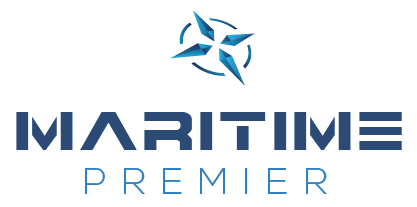Activate KMS for Windows and Office: A Complete Guide
Activating KMS for Windows and Office is an important step for users who want to ensure their Microsoft products are genuine and fully functional. Microsoft product activation helps verify that the software being used is licensed and not pirated. This process is essential for compliance with software licensing agreements.
KMS, or Key Management Service, is a method used for enterprise software activation. It allows organizations to activate multiple Microsoft products without needing to enter a product key for each installation. This is especially useful for businesses that deploy software across many computers.
Centralized activation management is a key feature of KMS. It enables IT departments to manage the activation of all Microsoft products from a single location. This makes it easier to keep track of licenses and ensure that all software is properly activated.
By using KMS activated systems, organizations can streamline their software management processes. This not only saves time but also helps in maintaining compliance with licensing requirements. Overall, understanding how to activate KMS for Windows and Office is crucial for any organization looking to efficiently manage their Microsoft software.
Overview of KMS Activation
KMS activation is a method that helps organizations activate Microsoft products like Windows and Office. It uses a KMS server to manage the activation process. This process is important for software compliance, ensuring that all software used is properly licensed.
Using KMS, businesses can automate software activation, making it easier to manage multiple installations. This is especially helpful for companies with many computers, as it reduces the time and effort needed for activation.
What is KMS activated?
KMS activated refers to systems that have been activated using the KMS method. This includes KMS activated Windows 10 and KMS activated Windows 11. When a system is KMS activated, it means that it is verified and compliant with Microsoft licensing.
Additionally, Office activation can also be done through KMS. This ensures that all Microsoft products are genuine and functioning correctly.
How does KMS activation work?
KMS activation works through a network activation process. The KMS server is set up to handle activation requests from client computers.
The activation server configuration is crucial for this process. It allows the server to communicate with the client machines and verify their licenses.
By using KMS, organizations can automate software activation, making it a smooth and efficient process. This helps in maintaining compliance and ensuring that all software is properly activated.
| Feature | Description |
|---|---|
| KMS Server | Central server for activation requests |
| Network Activation | Activates multiple systems over a network |
| Activation Process Automation | Streamlines the activation process |
“KMS activation simplifies the management of software licenses for organizations.”
Supported Products for KMS Activation
KMS activation supports various Microsoft products, making it easier for organizations to manage their software licenses. This includes volume licensing options that allow multiple installations to be activated at once. Centralized software activation helps IT departments keep track of all activations from one place.
KMS activated Windows 10
KMS activated Windows 10 is a popular choice for many businesses. Using a KMS client activator, organizations can activate multiple copies of Windows 10 efficiently. This method ensures that all installations are compliant with Microsoft licensing agreements.
- Benefits of KMS activated Windows 10:
- Simplifies activation for multiple devices
- Ensures software license compliance
- Reduces the need for individual product keys
KMS activated Windows 11
KMS activated Windows 11 offers similar advantages as its predecessor. The KMS server benefits include streamlined activation processes and improved management of software licenses. Organizations can activate Windows 11 across their networks without hassle.
- Key features:
- Centralized activation management
- Easy updates and maintenance
- Compliance with licensing requirements
Office 2016 KMS activation
Office 2016 KMS activation allows businesses to activate their Office applications through the KMS server. The KMS cmd activation Office method is used to ensure that all installations are properly licensed and compliant.
- Advantages of Office 2016 KMS activation:
- Quick and easy activation
- Centralized management of licenses
- Ensures all users have access to the latest features
Office 2019 KMS activation
Office activation for 2019 is also supported through KMS. This method helps organizations maintain software license compliance while providing access to the latest tools and features.
- Benefits include:
- Simplified activation process
- Centralized software management
- Compliance with licensing agreements
Server 2019 (LTSC) KMS activation
Enterprise network activation for Server 2019 (LTSC) is made easy with KMS. The activation server setup allows organizations to manage their server licenses efficiently.
- Key points:
- Streamlined activation for server environments
- Centralized management of licenses
- Ensures compliance with software licensing
Server 23H2 (Annual Channel) KMS activation
Network licensing for Server 23H2 is supported through KMS, allowing organizations to activate their servers efficiently. A centralized activation server simplifies the management of software licenses.
- Advantages of Server 23H2 KMS activation:
- Easy activation across multiple servers
- Centralized control over licenses
- Compliance with Microsoft licensing agreements
Benefits of Using KMS Activation
KMS activation provides several advantages for organizations looking to manage their software efficiently. One of the main benefits is improved software compliance. This ensures that all software used within the organization is properly licensed and meets legal requirements.
Another significant benefit is centralized license management. This allows IT departments to oversee all software licenses from one location, making it easier to track and manage them.
Additionally, KMS activation supports network-wide activation, which means that multiple devices can be activated simultaneously. This saves time and reduces the effort needed for individual activations.
Centralized license management
With centralized license management, organizations can streamline their activation processes. This feature allows for better activation management, as all licenses can be monitored and controlled from a single interface.
- Key advantages include:
- Simplified tracking of licenses
- Easier compliance checks
- Reduced administrative workload
Network-wide activation
Network-wide activation is another important benefit of KMS. This feature enables the use of a software activation tool that activates multiple systems across the network at once.
- Benefits of network-wide activation:
- Saves time during the activation process
- Ensures all devices are compliant with licensing
- Reduces the need for manual activation on each device
Software compliance and licensing
Maintaining software compliance is crucial for any organization. KMS activation helps ensure that all software installations meet the necessary licensing agreements.
- Key points about software compliance:
- Helps avoid legal issues related to unlicensed software
- Ensures all software license compliance is up to date
- Provides peace of mind for IT departments and management
KMS Server Configuration
KMS server configuration is essential for managing the activation of Microsoft products in an organization. It allows businesses to set up a centralized system for enterprise software activation. This means that instead of activating each software installation individually, the KMS server can handle multiple activations at once.
Proper configuration of the KMS server ensures that all client machines can communicate effectively with the server. This is crucial for maintaining compliance with software licensing agreements.
Setting up a KMS server
Setting up a KMS server involves several steps to ensure it functions correctly. First, you need to install the KMS server software on a dedicated machine within your network. This machine will act as the activation server for enterprise networks.
- Install KMS Software: Download and install the KMS software on your server.
- Configure DNS Settings: Ensure that your DNS settings are correctly configured to allow client machines to find the KMS server.
- Activate the KMS Server: Use a KMS key to activate the server itself.
- Set Up Firewall Rules: Make sure that the necessary ports are open to allow communication between the KMS server and client machines.
Activation server setup for enterprise networks
The activation server setup for enterprise networks is crucial for effective license management. This setup involves configuring the activation server configuration to allow for centralized activation management.
- Centralized Activation Management: This feature allows IT departments to manage all activations from a single location, making it easier to track licenses.
- Regular Maintenance: Regularly check the server for updates and ensure that it is functioning correctly to avoid activation issues.
- Monitoring Activations: Keep an eye on the number of activations to ensure compliance with licensing agreements.
KMS client activator usage
The KMS client activator is a tool used to automate software activation on client machines. This tool simplifies the activation process and ensures that all installations are compliant with licensing requirements.
- Automate Software Activation: By using the KMS client activator, organizations can activate multiple systems quickly and efficiently.
- User-Friendly Interface: The activator typically has a simple interface that makes it easy for IT staff to use.
- Compliance Assurance: Regular use of the KMS client activator helps maintain compliance with Microsoft licensing agreements.
Alternatives to KMS Activation
When looking for ways to activate software, there are several alternatives to KMS activation. These options can help organizations manage their software licensing effectively.
Using other software activation tools can provide different features and benefits. It’s important to explore these alternatives to find the best fit for your needs.
Other software activation tools
There are many other software activation tools available that can help with software licensing. These tools can simplify the activation process and ensure compliance with licensing agreements.
Some popular options include:
- Software Activation Manager: Helps manage multiple software licenses from one place.
- License Key Generator: Creates unique keys for software activation.
- Activation Toolkit: A comprehensive tool for managing software activations.
These tools can help organizations maintain software compliance and streamline their activation management.
Comparison of KMS with other activation methods
When comparing KMS activation with other activation methods, it’s essential to consider network activation and software compliance.
| Activation Method | Network Activation | Software Compliance |
|---|---|---|
| KMS Activation | Yes | High |
| MAK (Multiple Activation Key) | Limited | Moderate |
| Retail Activation | No | High |
KMS activation allows for network activation, making it easier to manage multiple installations. Other methods may not provide the same level of compliance and efficiency.
“Choosing the right activation method is crucial for maintaining software compliance and effective license management.”
FAQ Section
In this section, we will answer some common questions about KMS activation and its benefits.
What does the KMS activator do?
The KMS activator is a software activation tool that helps activate Microsoft products on client computers. It simplifies the activation process by allowing multiple installations to be activated at once.
- Key functions of the KMS client activator:
- Automates the activation process
- Ensures compliance with licensing agreements
- Saves time for IT departments
What does KMS do?
KMS, or Key Management Service, is a KMS server that manages the activation of Microsoft software. It allows organizations to activate their software licenses without needing to enter a product key for each installation.
- Benefits of using KMS for software licensing:
- Centralized management of software licenses
- Streamlined activation process
- Improved compliance with licensing requirements
How long does KMS activation last?
KMS activation typically lasts for 180 days. After this period, the software must re-activate to maintain software compliance.
- Important points about activation management:
- Regular checks are needed to ensure compliance
- Re-activation can be automated
- Helps avoid issues with unlicensed software
“KMS activation is essential for maintaining software compliance and effective license management.”

